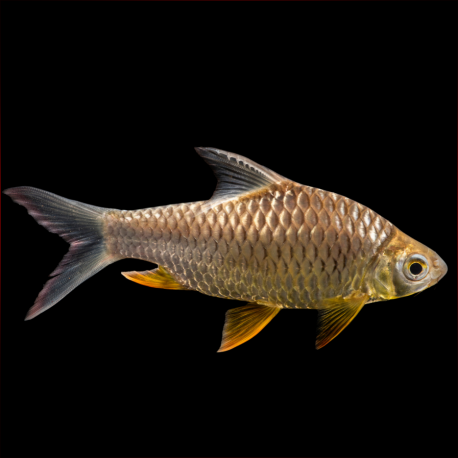More info
Datasheet
| Minimum Tank Size | 860 litres / 227.19 US gallons |
| Maximum Size | 25.0cm / 9.84inches |
| Temperature | 20°C / 68.00°F - 26°C / 78.80°F |
| Hardness | 0.00dgH / 0ppm - 0.00dgH / 0ppm |
| pH | 6.0-8 |
General Description
Hypsibarbus wetmorei is a fish species distinguished by its upper reddish-brown body, robust and non-compressed build, and distinct scale patterns. It is similar to H. vernayi but can be told apart by the color of its pectoral, pelvic, and anal fins - orange to red in H. wetmorei and yellow in H. vernayi. This species is part of the Cyprinidae family and is valued as a food fish throughout its range in Southeast Asia, though populations are declining due to human activities such as river damming and agriculture.
Aquarium Setup
For optimal care, an aquarium of at least 860 liters is recommended for H. wetmorei. Water quality is crucial, with a pH range of 6.0-8.0, temperature between 20-26°C, and soft water conditions. The tank setup should mimic a flowing river environment, with a substrate of rocks, gravel, boulders, and driftwood. These fish are intolerant of organic waste and require clean water with high dissolved oxygen levels to thrive.
Behaviour
Typically not aggressive unless confined, H. wetmorei may eat small fish and pester slower or timid tankmates due to their active and vigorous feeding behavior. They are schooling fish and should ideally be kept in groups of six or more individuals to promote their natural behavior patterns in a home aquarium.
Feeding and Diet
In the wild, Hypsibarbus species feed on shrimps and snails, indicating a benthic foraging behavior. In captivity, they accept a varied diet that includes live and frozen foods such as bloodworms, Daphnia, and Artemia, along with quality dried flakes, granules, and vegetable matter. Ensuring a diverse diet is essential for their health and well-being.
Reproduction & Dimorphism
There is no reported information on the reproduction of H. wetmorei. Sexually mature females are likely to have a deeper body and can grow larger than males, showing some sexual dimorphism in size and body shape.
Habitat and Distribution
N. wetmorei prefers flowing water with abundant riparian vegetation and avoids standing waters like reservoirs. They are found in mainland Southeast Asia, including the lower Mekong basin, various river systems in Thailand, and parts of Malaysia. Their migratory patterns are seasonal, although the specifics of their movements for spawning are not fully understood.

